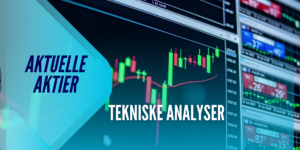De internationale finanshuse flyder samstemmende over i begejstring over udsigten til stærk økonomisk vækst i 2018. Kapacitetsknaphed ses i visse regioner at skabe øget inflation, men ikke nok til at afspore opsvinget. Og så ses også fortsatte geopolitiske risici. Mens makroøkonomien skulle udvikle sig positivt, er vurderingerne af udviklingen på de finansielle markeder langt mere skeptisk. Økonomisk Ugebrev gennemgår her analyser om udsigterne for 2018 fra otte finanshuse.
Stort set alle internationale finanshuse ser over en bred kam solid global økonomisk vækst i det nye år. Men de påpeger også en stribe risici, blandt andet effekten af centralbankernes pengepolitiske stramninger på realøkonomien.
Deutsche Bank skriver, at ”2018 will therefore be characterised by two market-defining factors: on the one hand, the strong global economy, and on the other, the central banks which will have to achieve a cautious transition to a less expansionary monetary policy. This is challenging because there is no precedent for exiting a zero interest rate policy – the currency guardians are having to probe into uncharted territory and act with corresponding caution. We are however optimistic that the monetary policy actions of the central banks will not have a lasting negative impact on the global economy in 2018.”
Den tyske storbank ser fremad større udsving på aktiemarkederne end i 2017: “Given the tension between the business cycle and central bank policy investors will, however, have to expect major price swings. Following the moderate fluctuations this year temporary price fluctuations would represent a normalisation of the markets.”
Morgan Stanley er også positivt på makroøkonomien, men ser især øgede risici på aktiemarkedet, ifølge finanshuset outlookanalyse for 2018 med overskriften “ Don’t Expect an Encore ”: “While we believe that US and non-US earnings are likely to increase further in 2018, the growth rate will likely peak in the first half. We also believe that financial conditions will tighten this year, and we can no longer say that investor sentiment and positioning is muted. In fact, there are now signs we have entered into the “euphoria” stage of this bull market— something we also forecasted in last year’s outlook. This doesn’t necessarily mean the bull market is over, because this stage can last awhile. It does mean, however, that whatever upside is left is likely to be more speculative and thus higher risk and lower quality than what we had in 2017.”
JP Morgan skriver under overskriften “ A difficult place to start – investing in 2018 and beyond ”, at “entering 2018, most American investors should feel richly rewarded by a long economic expansion and extended bull markets in equities and bonds. However, looking forward, they should also recognize that this is not a great starting point and that the very length and strength of the bull markets to this point will limit returns going forward. This makes choosing portfolio overweights and underweights even more important and makes it critical that investors control their enthusiasm for the most expensive assets.”
Finanshuset giver også en god pædagogisk forklaring på de mulige negative effekter af færre pengepolitiske stimulanser: ”In many ways the global economy has been like a sick patient in a hospital. Upon admission, doctors, in the form of central bankers, have pumped the patient full of monetary policy medicine. With the patient now looking healthier, the doctors must change their approach and wean the patient off of the medicine. As anyone who has given up sugar or coffee will know, breaking an addiction doesn’t come without its side effects. With central banks hiking interest rates, reducing asset purchase programs and shrinking balance sheets, there will be some negative withdrawal effects around the world.”
Blackrock ser ikke umiddelbare flaskehalse som vil dæmpe den økonomiske vækst. Under overskriften ” Room to run ” hedder det, at “expansions come and expansions go. We see this one hanging around for longer than many expect. Yes, the G7 output gap − the difference between actual output and economic potential − is shrinking as the U.S. economy has joined Germany, the UK and Canada in running near full capacity. See the Filling up chart. Yet when growth is only slightly above trend, economies can run beyond potential for a long time before peaking, our analysis shows. And plenty of spare capacity in parts of Europe means the developed world as a whole (not just the G7) still has a hefty output gap. This suggests to us that the remaining time to this cycle’s peak is likely years, not quarters.”
Om geopolitiske risici skriver den globale kapitalforvalter, at ”markets may be eerily calm, but geopolitical risks abound. They range from North Korea’s nuclear program and missile launches to proxy wars between Saudi Arabia and Iran. Our evolving BlackRock Geopolitical Risk Indicator (BGRI), which tracks how often our top-10 political risks are mentioned in media and brokerage reports, is running at elevated levels. See the Ups and downs chart. Global reverberations are typically short-lived — but more acute and longerlasting when the economy is weak, our analysis of shocks of the past 50 years suggests. We are not there today, but see U.S. Treasuries and gold providing a buffer against any risk asset sell-offs. These perceived safe havens tend to rally ahead of “known unknowns” such as elections, then lag after the event as fading uncertainty boosts risk assets. The market effects of localized geopolitical risks tend to linger longer where they occur.”
Goldman Sachs skriver om Outlook for 2018 under overskriften ” As Good As It Gets ”: ”If the output gap has largely closed, why is core inflation still so low? Our analysis suggests that a good part of the answer lies in a sizable and relatively long-lasting drag from the earlier weakness in import and commodity prices, which has offset the relatively small (though statistically highly significant) impact of diminishing slack so far. Over the next year, these pass-through effects are likely to diminish and we expect a gradual increase in global core inflation, albeit to levels that are still below central bank targets in most places.”
Goldman Sachs skriver om geopolitiske risici, at “the bigger risks to our global outlook are likely political. NAFTA negotiations continue to struggle and we believe that the Trump Administration could announce its intent to withdraw if the talks do not result in a revised agreement by early 2018(…)In Europe, the impact of a populist win in the Italian election in 2018 could be profound. But while opinion polls point to a strong showing from the Five Star Movement, our base case is that the election will deliver a broad coalition which will not bring Italian membership of the EU or participation in the Euro into question.”
Den globale kapitalforvalter Vanguard skriver om 2018 under overskriften “ Rising risks to the status quo ”, at det i forvejen stramme arbejdsmarked i USA kan tvinge den amerikanske centralbank til at øge de korte renter mere, end markedet aktuelt forventer: ”The most pronounced risk to the status quo resides in the United States, where an already tight labor market will grow tighter, driving the unemployment rate well below 4%. This, followed by a cyclical uptick in wages and inflation, should justify the Federal Reserve’s raising rates to at least 2% by the end of 2018. Expectations of additional rate hikes would inevitably follow, ending an era of extraordinary monetary support in the United States and possibly leading markets to price in more aggressive normalization plans elsewhere. None of this is status quo.”
Også Bank of America/Merrill Lynch er skeptiske i finanshusets outlook i forhold til udviklingen på de finansielle markeder: ”Our overall outlook for the year ahead is macro bullish, so much so that we’re ultimately market bearish,” said Michael Hartnett, head of Global Investment Strategy, BofA Merrill Lynch Global Research. “Investors are chasing growth and high-yielding assets in a bull market that’s been driven and enabled by central bank liquidity. We see an end to this Icarus trade and an aggressive downgrade of risk assets once profits peak, investor positioning becomes excessively enthusiastic and central banks start withdrawing liquidity as they scale back support.”
Videre skriver finanshuset, at “2018 could be the year of euphoria. Sentiment is now a more important driver of the S&P 500 than fundamentals, and sentiment suggests there is still room for stocks to move higher in the near term. The bull market in the S&P 500 is on a path to become the longest ever on Aug. 22, 2018, and if equities outperform bonds for a seventh consecutive year, it would be the first time since 1928 and only the third time in the past 220 years. A top target of 2863 is forecast for the S&P 500 early in 2018.”
Vær et skridt foran
Få unik indsigt i de vigtigste erhvervsbegivenheder og dybdegående analyser, så du som investor, rådgiver og topleder kan handle proaktivt og kapitalisere på ændringer.
- Vi filtrerer støjen fra den daglige nyhedscyklus og analyserer de mest betydningsfulde tendenser.
- Du får dybdegående og faktatjekket journalistik om vigtige erhvervsbegivenheder lige nu.
- Adgang til alle artikler på ugebrev.dk.



